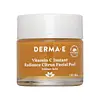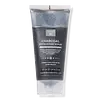What's inside
What's inside
 Key Ingredients
Key Ingredients

 Benefits
Benefits

 Concerns
Concerns

 Ingredients Side-by-side
Ingredients Side-by-side

Water
Skin ConditioningCitrus Grandis Peel
PerfumingGlycerin
HumectantHydroxypropyl Starch Phosphate
Glycolic Acid
BufferingSodium Ascorbyl Phosphate
AntioxidantPhytic Acid
Sodium Gluconate
Skin ConditioningAloe Barbadensis Extract
Skin ConditioningPanthenol
Skin ConditioningSodium Hyaluronate
HumectantLactic Acid
BufferingCitrus Limon Fruit Extract
MaskingRosmarinus Officinalis Leaf Extract
AntimicrobialXanthan Gum
EmulsifyingPhenoxyethanol
PreservativeEthylhexylglycerin
Skin ConditioningIron Oxides
Jojoba Esters
EmollientCitrus Aurantium Dulcis Peel Oil
MaskingWater, Citrus Grandis Peel, Glycerin, Hydroxypropyl Starch Phosphate, Glycolic Acid, Sodium Ascorbyl Phosphate, Phytic Acid, Sodium Gluconate, Aloe Barbadensis Extract, Panthenol, Sodium Hyaluronate, Lactic Acid, Citrus Limon Fruit Extract, Rosmarinus Officinalis Leaf Extract, Xanthan Gum, Phenoxyethanol, Ethylhexylglycerin, Iron Oxides, Jojoba Esters, Citrus Aurantium Dulcis Peel Oil
Water
Skin ConditioningCocamidopropyl Betaine
CleansingSodium Coco-Sulfate
CleansingPumice
AbrasiveCharcoal Powder
AbrasiveJuglans Regia Shell Powder
AbrasiveAloe Barbadensis Leaf Juice
Skin ConditioningHydrogenated Jojoba Oil
AbrasiveGlycerin
HumectantCaprylyl Glycol
EmollientSodium Hyaluronate
HumectantHelianthus Annuus Seed Oil
EmollientTheobroma Cacao Seed Butter
EmollientButyrospermum Parkii Butter
Skin ConditioningCitrus Aurantium Dulcis Fruit Extract
MaskingAloe Barbadensis Leaf Extract
EmollientMangifera Indica Fruit Extract
Skin ConditioningChamomilla Recutita Flower Extract
MaskingLavandula Angustifolia Flower Extract
CleansingMelaleuca Alternifolia Leaf Oil
AntioxidantButylene Glycol
HumectantAcrylates/C10-30 Alkyl Acrylate Crosspolymer
Emulsion StabilisingLauramide Dipa
Emulsion StabilisingPropanediol
SolventParfum
MaskingSodium Hydroxide
BufferingPhenoxyethanol
PreservativeWater, Cocamidopropyl Betaine, Sodium Coco-Sulfate, Pumice, Charcoal Powder, Juglans Regia Shell Powder, Aloe Barbadensis Leaf Juice, Hydrogenated Jojoba Oil, Glycerin, Caprylyl Glycol, Sodium Hyaluronate, Helianthus Annuus Seed Oil, Theobroma Cacao Seed Butter, Butyrospermum Parkii Butter, Citrus Aurantium Dulcis Fruit Extract, Aloe Barbadensis Leaf Extract, Mangifera Indica Fruit Extract, Chamomilla Recutita Flower Extract, Lavandula Angustifolia Flower Extract, Melaleuca Alternifolia Leaf Oil, Butylene Glycol, Acrylates/C10-30 Alkyl Acrylate Crosspolymer, Lauramide Dipa, Propanediol, Parfum, Sodium Hydroxide, Phenoxyethanol
Ingredients Explained
These ingredients are found in both products.
Ingredients higher up in an ingredient list are typically present in a larger amount.
Glycerin is already naturally found in your skin. It helps moisturize and protect your skin.
A study from 2016 found glycerin to be more effective as a humectant than AHAs and hyaluronic acid.
As a humectant, it helps the skin stay hydrated by pulling moisture to your skin. The low molecular weight of glycerin allows it to pull moisture into the deeper layers of your skin.
Hydrated skin improves your skin barrier; Your skin barrier helps protect against irritants and bacteria.
Glycerin has also been found to have antimicrobial and antiviral properties. Due to these properties, glycerin is often used in wound and burn treatments.
In cosmetics, glycerin is usually derived from plants such as soybean or palm. However, it can also be sourced from animals, such as tallow or animal fat.
This ingredient is organic, colorless, odorless, and non-toxic.
Glycerin is the name for this ingredient in American English. British English uses Glycerol/Glycerine.
Learn more about GlycerinPhenoxyethanol is a preservative that has germicide, antimicrobial, and aromatic properties. Studies show that phenoxyethanol can prevent microbial growth. By itself, it has a scent that is similar to that of a rose.
It's often used in formulations along with Caprylyl Glycol to preserve the shelf life of products.
Sodium Hyaluronate is hyaluronic acid's salt form. It is commonly derived from the sodium salt of hyaluronic acid.
Like hyaluronic acid, it is great at holding water and acts as a humectant. This makes it a great skin hydrating ingredient.
Sodium Hyaluronate is naturally occurring in our bodies and is mostly found in eye fluid and joints.
These are some other common types of Hyaluronic Acid:
Learn more about Sodium HyaluronateWater. It's the most common cosmetic ingredient of all. You'll usually see it at the top of ingredient lists, meaning that it makes up the largest part of the product.
So why is it so popular? Water most often acts as a solvent - this means that it helps dissolve other ingredients into the formulation.
You'll also recognize water as that liquid we all need to stay alive. If you see this, drink a glass of water. Stay hydrated!
Learn more about Water